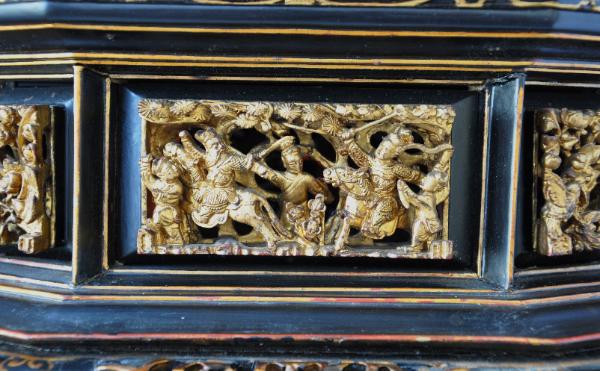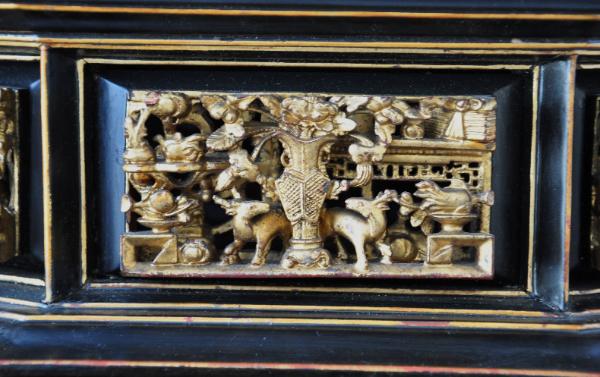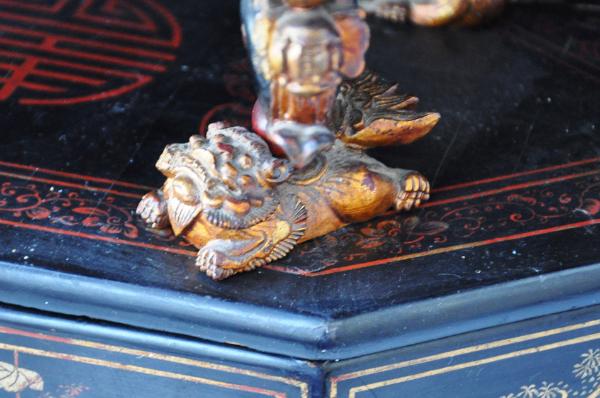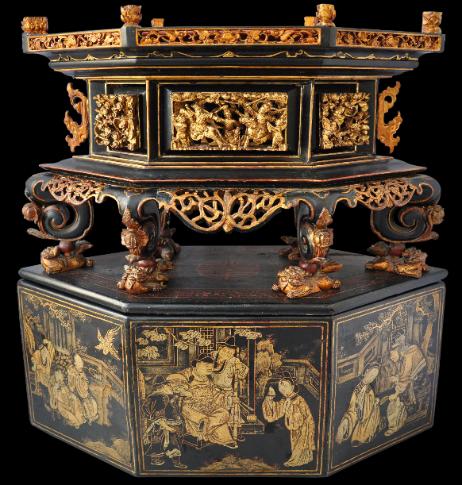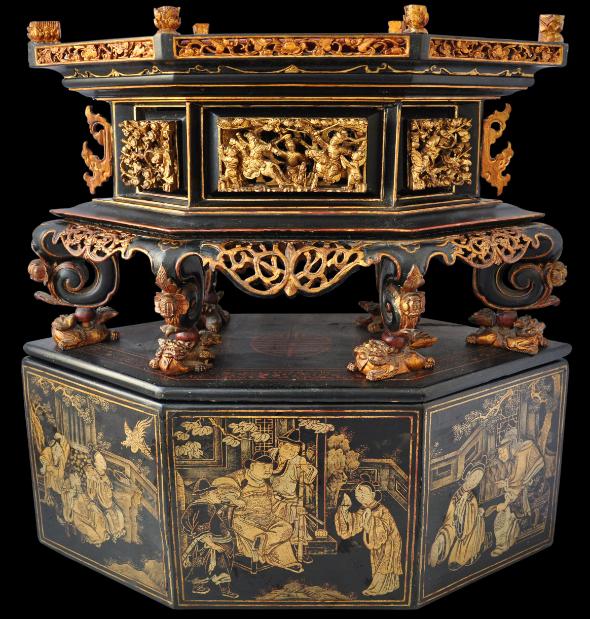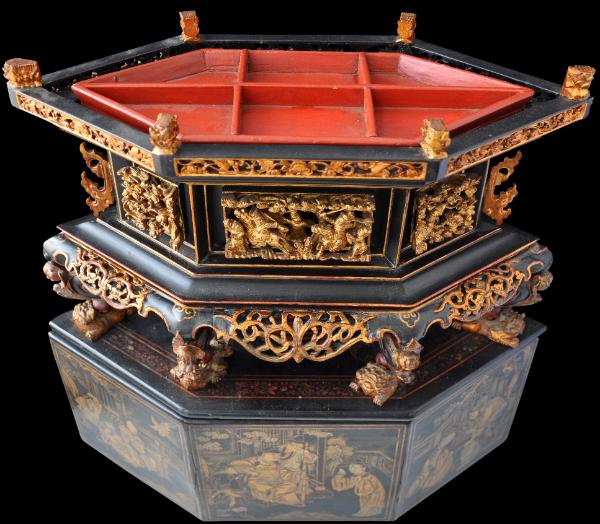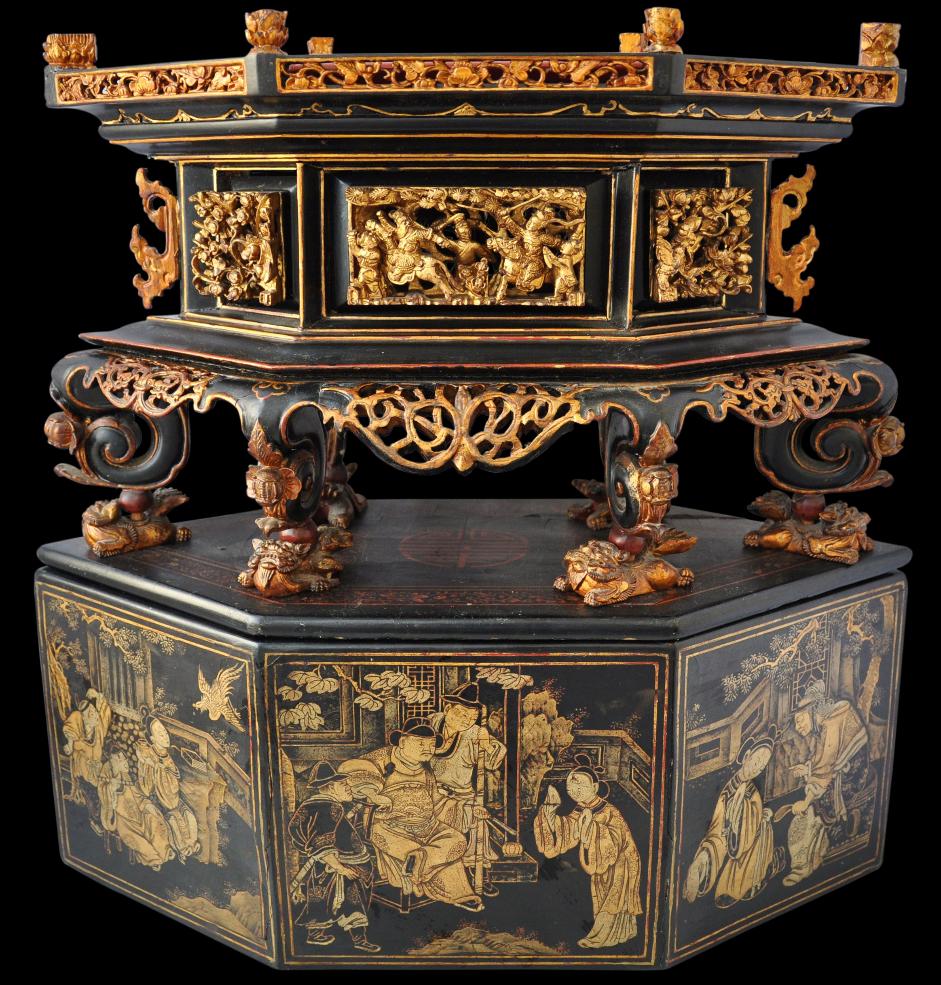Straits Chinese Peranakan Chanab
Gilded & Lacquered Wooden Offering Box (Chanab)
China for the Straits Chinese
19th century
height: 41cm,
length: 41cm
This six-sided chanab, executed in black and red lacquered and gilded pinewood and with a black and gold lacquered cover, is intricately carved with typically Chinese scenes including deers amongst foliage, fighting scenes and humming birds. It has six feet, each of which sits on moveable, splendidly carved Buddhistic lions. Unusually, a ‘shu’ (‘long life’) symbol is painted in red on the base between the lions.
When not in use, The cover is placed over the
chanab to protect it when not in use, although the fit now is rather tight and the two parts are best left on display. The cover is lacquered on all sides with mountain and bird scenes to one side and with figures in traditional Chinese dress on the other. The artwork on the cover is of an unusually high standard.
The top retains its original red-painted tray that has six compartments.
The condition of this
chanab is very good. There is some minor lifting of the lacquer to the cover and some losses to the lacquer elsewhere but the carving is intact and without loss.
A similar
chanab is in Khoo (1996, p. 82) and in use, on p. 84. Others are illustrated in Ho (1994, p. 91); Tan (1993, p. 9); and Lee & Chen (1998, p. 46).Chanabs used by Straits and Peranakan Chinese of Southeast Asia tended to be of the hexagonal variety (such as the one here). Chanabs used by the Hokkien in China usually were square.
The
chanab was placed in the centre of each Straits Chinese family’s sam kai altar, the most important altar in the family home. The sam kai altar was used for important ceremonies, particularly weddings. When not in use, the six-sided black lacquered box was placed over the chanab to protect it.
Called a
beet-chien in Penang and a chien-arb or chanab in Malacca and Singapore, bamboo skewers of crystallised papaya were stood on a pewter rack that was placed on top of the chanab as offerings for the God of Heaven.
References
Khoo J.E., The Straits Chinese: A Cultural History, Pepin Press, 1996; Ho, W.M., Straits Chinese Furniture, Times, 1994; Tan, C.B., Chinese Peranakan Heritage in Malaysia and Singapore, Penerbit Fajar Bakti, 1993; Lee, P. and J. Chen, Rumah Baba: Life in a Peranakan House, National Heritage Board, Singapore, 1998.
Inventory no.: 1123
SOLD
to see another example.
Detail: Crucifix stamped to the side of the bowl.
